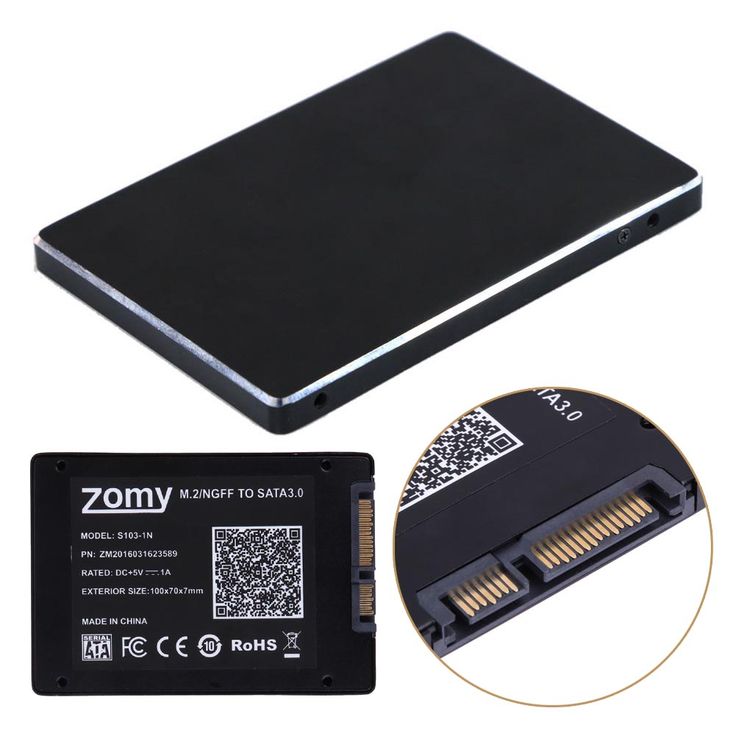Introduction to SSDs and Their Benefits
Solid-state drives (SSDs) are modern storage devices. They enhance computer performance significantly compared to traditional hard disk drives (HDDs). SSDs have several advantages that make them attractive for both personal and professional use.

What Makes SSDs Faster and More Reliable than HDDs?
Solid State Drives (SSDs) have become the preferred storage solution for many users, especially those who prioritize speed and reliability. The key factors that make SSDs faster and more reliable than traditional Hard Disk Drives (HDDs) are rooted in their design and operational principles.
Lack of Moving Parts:
One of the most significant advantages of SSDs is their lack of moving parts. Unlike HDDs, which use spinning platters and read/write heads, SSDs store data on flash memory chips. This design allows SSDs to access data almost instantaneously, as there is no need to wait for mechanical components to move into position. The absence of moving parts also means that SSDs can achieve much lower latency, making them ideal for applications that require rapid data access, such as gaming, video editing, and large-scale data processing.
Improved Durability:
The solid-state nature of SSDs makes them inherently more durable than HDDs. Since there are no delicate mechanical components, SSDs are less susceptible to physical damage from drops, shakes, or other forms of impact. This makes them a better choice for portable devices like laptops and tablets, where the risk of accidental damage is higher. Additionally, the robustness of SSDs means they can operate in a wider range of environments, including those with high levels of vibration or extreme temperatures.
Power Efficiency:
SSDs consume significantly less power than HDDs. This is because they do not require the energy needed to spin platters or move read/write heads. In laptops, this power efficiency translates to longer battery life, which is a crucial factor for many users. For example, a laptop equipped with an SSD can often run for several hours longer on a single charge compared to one with an HDD. This is particularly beneficial for users who need to work on the go or in situations where power outlets are not readily available.
Preparing for Data Migration
Before you begin the process of transfer HDD to SSD, it’s crucial to prepare adequately. Proper preparation ensures a seamless transfer, minimizing potential disruptions.
Essential Steps Before Initiating the Transfer
- Backup Important Data: Always start by backing up your data. Use an external drive or cloud storage for safety.
- Check SSD Capacity: Ensure that your new SSD has enough space to accommodate the data from your HDD.
- Update Software: Ensure that your system’s software, especially the operating system, is up to date.
- Defragment Your HDD: This step helps in organizing the data more efficiently, thus easing the cloning process.
- Identify Important Programs and Files: Decide which programs and files must move to SSD.
Tools Required for Cloning and Data Migration
To successfully transfer HDD to SSD, you need the right tools:
- Cloning Software: A reliable cloning software like EaseUS Disk Copy or Macrium Reflect is essential.
- External Storage Device: For backing up your files pre-transfer.
- SATA to USB Cable: This cable will connect your SSD to your computer for data transfer.
- Disk Management Tool: Helps in resizing partitions and managing drives both before and after transfer.
By following these steps and using these tools, you can ensure that your transition to an SSD is smooth and free from major issues.
Step-by-Step Guide to Cloning HDD to SSD
Selecting the Right Cloning Software
Choosing the right cloning software is vital for a successful data transfer. Look for software that is reliable, user-friendly, and compatible with your operating system. EaseUS Disk Copy and Macrium Reflect are popular options. These programs offer a straightforward interface and comprehensive instructions, ensuring you feel confident throughout the process.
Connecting Your SSD for Data Transfer
Before cloning, connect your SSD to your computer with a SATA to USB cable. Ensure the connection is secure to prevent data loss. Once connected, initialize the SSD using a disk management tool if it’s not already prepped for use.
Cloning Process: How to Ensure a Smooth Transfer HDD to SSD
- Install Cloning Software: Install your chosen cloning software on your computer.
- Select Source and Target Drives: Choose your HDD as the ‘source’ and SSD as the ‘target’ within the software.
- Start Cloning: Follow the software’s instructions to start the cloning process. This may take some time.
- Monitor Process: Keep an eye on the progress bar. Pause if necessary but avoid stopping the process abruptly.
Follow these steps meticulously. It’s important to be patient and methodical to ensure a smooth transfer HDD to SSD without any data mishaps.

Post-Cloning Steps
After successfully cloning your HDD to your new SSD, there are crucial steps to follow.
Ensuring the SSD is the Primary Boot Device
Make your SSD the primary boot device to start your system with the new drive.
- Restart your Computer: Initiate a system reboot to access BIOS or UEFI settings.
- Enter BIOS/UEFI: Use the specific key shown during startup to enter settings.
- Modify Boot Order: Navigate to the boot order section and select your SSD as the primary boot device.
- Save Changes and Exit: Apply the changes and exit the BIOS/UEFI, allowing the computer to reboot from the SSD.
This ensures your system boots quickly from the SSD, utilizing the speed advantages of your new drive.
What to Do with Your Old HDD
After cloning, your old HDD can still be useful.
- External Storage: Encase in an external enclosure to use as additional external storage.
- Backup Purposes: Keep it as a backup drive, storing copies of important files or system backups.
- Secure Erase: If you choose to dispose of it, ensure to erase data securely to prevent unauthorized access.
Using your old HDD as a backup or for additional storage can provide a safety net against data loss.
Troubleshooting Common Issues During Migration
When transfer HDD to SSD, several issues might arise that require troubleshooting. Here are some common challenges and how to handle them effectively.
Addressing Capacity Differences Between HDD and SSD
Often, SSDs have less storage capacity compared to HDDs. This difference can create challenges during data migration:
- Prioritize Crucial Data: Transfer only essential files and applications to the SSD.
- Use External Storage: Store large files or rarely used data on an external hard drive.
- Utilize Cloud Storage: Take advantage of cloud services for additional storage space.
- Clean Your HDD: Delete unnecessary files before cloning to free up space.
Follow these steps to manage the capacity difference effectively and ensure a smooth data transfer.
Solving Compatibility and Software Issues
Sometimes, software or hardware may not immediately work as expected with a new SSD:
- Update Drivers: Ensure all drivers, especially for the SSD, are up to date.
- Check SSD Format: Verify that the SSD is formatted correctly, usually to NTFS for Windows.
- Install Necessary Software: Some programs might need reinstallation on the new SSD.
- Consult Manufacturer Support: If issues persist, check for guidance from the SSD’s manufacturer.
By addressing these key points, you can resolve most compatibility and software related issues when migrating to an SSD.

Leveraging SSDs for Optimal Performance
To get the best out of your new SSD, certain adjustments in system settings may be needed. These changes ensure your SSD works efficiently and prolongs its lifespan.
Adjusting System Settings for SSDs
- Enable TRIM Command: This tells your OS to inform the SSD which blocks of data are no longer in use and can be wiped internally, which helps in maintaining the performance of the SSD over a long period.
- Disable Disk Defragmentation: Unlike HDDs, SSDs don’t need defragmentation. Disabling this can prevent unnecessary write actions on the SSD.
- Turn Off Indexing: Indexing creates a large database of file locations to speed up search, but it’s not essential for SSDs and creates extra writes.
- Update Firmware: Keep the SSD’s firmware up to date for improvements and bug fixes.
Maintenance Tips to Prolong SSD Lifespan
- Regularly Update Your OS: This can ensure you have the latest features and security patches.
- Monitor SSD’s Health: Use tools that check the SSD’s health and remaining lifespan.
- Avoid Full Disk: Try to keep your SSD at no more than 70% of its capacity to optimize performance.
- Controlled Environment: Protect the SSD from extreme temperatures and humidity to avoid damage.
- Power Management Settings: Ensure they are optimized for SSD use to prevent excessive wear and tear.
By implementing these settings adjustments and maintenance tips, you can take advantage of the full potential of your SSD.

